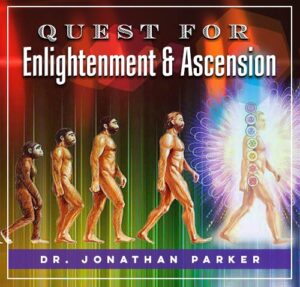Why Do Some People Believe in the Afterlife?

Looking for more amazing products? Check out our online store and explore our collection here! Happy shopping!
Before diving in, please note: This post is for informational purposes only. If you’d like to know more about how we approach topics, feel free to check out our friendly Disclaimer Page.
Hey there, amazing readers! 
We’re committed to delivering quality posts, and your support (even just sticking around despite the ads) means everything to us. So, bear with us, and thanks for helping us keep the good vibes rolling. Now, on to the fun stuff!
TRANSLATE BUTTON AT THE END OF THE ARTICLE
A Quick Overview
Why do some people believe in the afterlife?
This question sits at the intersection of philosophy, spirituality, and psychology.
For centuries, humanity has grappled with the notion of what happens after we take our last breath.
Different cultures, religions, and individual experiences shape this belief in various ways.
In this article, we’ll dive into the fascinating world of afterlife beliefs and explore the many reasons people hold onto the idea of life beyond death.
Why Do Some People Believe in the Afterlife?
Belief in an afterlife transcends individual cultures and eras, suggesting a universal quest for understanding our existence.
It often stems from a combination of cultural heritage, personal experiences, and intrinsic human emotions.
At its core, this belief answers our existential questions: What happens to us when we die?
Is there a purpose to life, or does everything just cease?
Many people find comfort in the idea that consciousness continues after death.
This perspective can soothe fears of oblivion and provide a sense of purpose.
It’s a powerful thought: that our lives mean something beyond the physical.
Whether through religion, philosophy, or personal experiences, the belief in an afterlife offers a sense of continuity that many find essential.
Additionally, the human mind is wired to seek patterns and make sense of the world around us.
In the face of death, it’s natural to look for explanations, connections, and narratives that extend beyond our immediate reality.
The afterlife serves as a narrative tool, providing closure, hope, and an avenue for emotional healing.
The Intriguing Concept of Life After Death Explored
Life after death posits that our essence or soul persists beyond the physical body.
Various interpretations of this belief can be found across cultures and religions.
For example, some envision a paradise or hell, while others see reincarnation as a path for the soul to learn and grow.
Reincarnation: In Hinduism and Buddhism, reincarnation is a central tenet.
The belief is that souls are reborn based on their karma.
Each life offers lessons to learn, leading to spiritual evolution.
Heaven and Hell: Many Western religions, like Christianity and Islam, offer visions of eternal life in heaven or torment in hell based on one’s actions in life.
This belief provides a moral framework that influences daily decisions.
Spiritual Existence: New Age beliefs often propose that after death, we transition to a different plane of existence where we continue to grow and learn.
This perspective emphasizes personal growth and spiritual connection.
Explore the Path to Spirituality and Enlightenment – Start Here.

By digging deep into these concepts, one can see how they meet our emotional needs.
They provide explanations for suffering and loss, along with the hope of reunion with loved ones.
Historical Perspectives on Afterlife Beliefs Through Ages
Beliefs about the afterlife have evolved over the centuries, shaped by historical events, philosophical movements, and emerging knowledge.
Ancient civilizations, like the Egyptians, placed significant importance on the afterlife, believing in elaborate burial rituals and the journey of the soul through the afterlife.
Ancient Egypt: They believed in immortality, which is why they built grand pyramids and mummified their dead.
They thought a successful afterlife required a moral path during life.
Greco-Roman Views: Philosophers like Plato theorized about the immortality of the soul.
The Greeks had varied beliefs, from the shadowy existence in Hades to the Elysian Fields for the virtuous.
Medieval and Renaissance Periods: These eras saw the rise of religious doctrines surrounding the afterlife, particularly in Christianity.
The concept of salvation and eternal damnation became central themes in art, literature, and theology.
This historical perspective shows that beliefs about the afterlife are not stagnant.
Instead, they adapt to the changing tides of culture, philosophy, and societal needs.
The Role of Culture in Shaping Afterlife Views
Culture plays a crucial role in shaping how we view the afterlife.
Our upbringing, the stories we hear, and the rituals we practice all contribute to our beliefs about life after death.
For instance, in many Indigenous cultures, the afterlife is intertwined with nature and ancestral spirits.
Practices like ancestor worship reflect a belief that those who have passed remain present in some form.
In contrast, contemporary secular societies often lean towards skepticism, emphasizing scientific explanations.
However, even in these cultures, many people find solace in agnostic beliefs, holding onto the idea of something beyond our understanding.
This cultural lens provides a rich tapestry of beliefs about the afterlife.
It’s fascinating to see how our surroundings mold our understanding of what lies beyond.
Spiritual Experiences That Reinforce Afterlife Beliefs
Countless individuals report spiritual experiences that bolster their beliefs in an afterlife.
These experiences vary widely, including moments of profound insight, dreams of deceased loved ones, and near-death experiences (NDEs).
NDEs: People who have had near-death experiences often describe sensations of peace, seeing light, or encountering deceased individuals.
These accounts can be extraordinarily vivid and transformative, leading to a strengthened belief in an afterlife.
Dreams: Many claim to have experienced dreams where they connect with lost loved ones.
These dreams can bring comfort and reinforce the idea of an enduring bond beyond death.
Intuitive Feelings: Some individuals report feeling the presence of deceased loved ones in moments of emotional need.
These intuitions can shape one’s perception of continued existence.
These personal experiences create a bridge between the physical world and a perceived afterlife, offering insights that encourage belief and comfort.
Psychology: Comforting Ideas That Soothe Our Fears
Psychological perspectives provide valuable insights into why afterlife beliefs persist.
Humans have an inherent fear of death, which can provoke anxiety and dread.
Believing in an afterlife can serve as a coping mechanism.
Fear of Oblivion: The thought of ceasing to exist can be terrifying.
Afterlife beliefs offer reassurance that life continues in some form.
Purpose and Meaning: Believing in an afterlife can provide significance to life’s struggles.
It suggests that our actions carry weight and that there’s more beyond our earthly existence.
Community and Connection: Sharing beliefs about the afterlife can strengthen social bonds.
In times of grief, these beliefs can foster a sense of community and support.
Understanding the psychological aspect of afterlife beliefs reveals how they meet our emotional needs.
They serve as a buffer against the harsh realities of mortality.
Religion’s Influence on Afterlife Convictions Worldwide
Religion plays a significant role in shaping beliefs about the afterlife.
Each faith offers its own narrative regarding what happens after death.
Christianity: Teaches about heaven, hell, and purgatory, emphasizing salvation through faith and good deeds.
Islam: Believes in a day of judgment where individuals are rewarded or punished based on their earthly deeds.
Buddhism: Focuses on the cycle of rebirth and enlightenment, seeing the afterlife as a continuation of learning and growth.
Religious teachings can provide structure and community support, making these beliefs deeply ingrained in the followers’ lives.
The power of shared beliefs can be transformative, offering hope and solace.
Anecdotes and Near-Death Experiences That Fascinate
Near-death experiences have fascinated both believers and skeptics.
The stories people share often contain similar elements, such as moving through a tunnel, encountering bright lights, or meeting deceased relatives.
Common Themes: Many report feelings of peace and love, which can change lives.
These accounts often inspire people to reflect on their lives and relationships, encouraging a more compassionate outlook.
Research Studies: Scientists have studied NDEs, trying to understand their implications.
Some argue these experiences are neurological responses, while others see them as evidence of consciousness beyond death.
These anecdotes stir curiosity and provoke questions.
They challenge our understanding of consciousness and what may lie ahead.
Personal Growth and Afterlife Beliefs: A Connection
Beliefs in the afterlife often encourage personal growth and self-improvement.
When we consider that our actions may have lasting impacts, it can motivate us to lead more meaningful lives.
Moral Compass: Afterlife beliefs can serve as a moral guide.
Many strive to be better people, hoping for an eventual reward or reconciliation.
Legacy: The desire to leave a positive legacy can inspire individuals to engage in acts of kindness, charity, or service to others.
Facing Mortality: Confronting mortality can lead to profound personal insights and changes.
Many find that contemplating life after death urges them to embrace the present and cherish relationships.
These connections highlight how afterlife beliefs can fuel personal transformation and fulfillment.
How Art and Literature Reflect Afterlife Concepts
Art and literature have long explored themes of the afterlife.
These mediums often provide a lens through which people can express their interpretations of life after death.
Literary Works: Books like Dante’s "Divine Comedy" and Milton’s "Paradise Lost" delve into the afterlife’s moral and spiritual implications, influencing readers for generations.
Visual Arts: Paintings, from the surreal to the classical, often depict scenes of heaven, hell, or the soul’s journey.
These artistic representations provoke thought and evoke emotion.
Modern Media: Movies and television often tackle afterlife themes, exploring diverse interpretations that resonate with viewers.
From comedies to profound dramas, these stories contribute to ongoing conversations about existence.
Art and literature allow us to process our beliefs and fears about the afterlife, creating dialogue that can lead to deeper understanding.
Scientific Perspectives: Debates on Life After Death
The scientific community offers a critical lens on the belief in an afterlife.
While many scientists remain skeptical, there’s ongoing research exploring consciousness and existence beyond death.
Consciousness Studies: Some researchers investigate the nature of consciousness, asking whether it can exist independently of the physical body.
Skeptical Views: Many scientists argue that afterlife beliefs stem from psychological and cultural factors, emphasizing the importance of empirical evidence.
Quantum Theories: Some fringe theories propose that consciousness could be linked to quantum mechanics, suggesting unexplored possibilities about existence after death.
These debates highlight the complexity of the afterlife question, showcasing a myriad of perspectives that invite curiosity and exploration.
The Community Aspect of Believing in an Afterlife
Belief in the afterlife often manifests within communities.
Whether through religious groups, support networks, or cultural gatherings, these shared beliefs foster a sense of belonging.
Support during Grief: Communities often rally around the bereaved, providing comfort and sharing in the belief that loved ones are in a better place.
Cultural Rituals: Many cultures have specific rituals honoring the deceased, reinforcing connections and shared beliefs.
These practices create continuity across generations.
Shared Narratives: Telling stories about the afterlife can strengthen community bonds.
These narratives can provide mutual support while navigating loss.
Communities built around afterlife beliefs create a network of understanding, compassion, and love that sustains individuals during difficult times.
Embracing the Unknown: Finding Joy in Afterlife Beliefs
Ultimately, our beliefs about the afterlife can offer hope and joy amid uncertainty.
Embracing the unknown can be empowering rather than frightening.
Celebrating Life: Focusing on potential afterlife experiences allows individuals to celebrate life rather than fear death.
It promotes a positive outlook on existence.
Connection to Loved Ones: Beliefs about the afterlife can provide solace, enabling connections to endure even after a loved one’s passing.
Encouraging Exploration: The mystery surrounding the afterlife invites exploration of spirituality, philosophy, and personal beliefs.
This journey can lead to profound insights and self-discovery.
By embracing the potential of an afterlife, we can find joy in life’s fleeting moments.
The idea of a continuation fosters appreciation, encouraging us to live fully in the present.
Conclusion
The belief in an afterlife is incredibly complex, influenced by culture, religion, personal experiences, and psychological needs.
It provides comfort in the face of death, reinforcing moral values while fostering community connections.
Whether viewed through the lens of spirituality or psychology, our beliefs about what comes next shape how we navigate our lives today.
While not everyone may believe in an afterlife, the questions surrounding existence after death remain pertinent.
They invite us to reflect on what it means to live a meaningful life.
In the end, it’s this journey of exploration and understanding that truly enriches our human experience.

The Enlightenment Journey is a remarkable collection of writings authored by a distinguished group of experts in the fields of spirituality, new age, and esoteric knowledge.
This anthology features a diverse assembly of well-experienced authors who bring their profound insights and credible perspectives to the forefront.
Each contributor possesses a wealth of knowledge and wisdom, making them authorities in their respective domains.
Together, they offer readers a transformative journey into the realms of spiritual growth, self-discovery, and esoteric enlightenment.
The Enlightenment Journey is a testament to the collective expertise of these luminaries, providing readers with a rich tapestry of ideas and information to illuminate their spiritual path.
Our Diverse Expertise
While our primary focus is on spirituality and esotericism, we are equally passionate about exploring a wide range of other topics and niches 

To ensure we provide the most accurate and valuable insights, we collaborate with trusted experts in their respective domains 
Our blog originally focused on spirituality and metaphysics, but we’ve since expanded to cover a wide range of niches. Don’t worry—we continue to publish a lot of articles on spirituality! Frequently visit our blog to explore our diverse content and stay tuned for more insightful reads.
Hey there, amazing reader! 
Check out our store here and take a peek at some of our featured products below! Thanks for being awesome!













